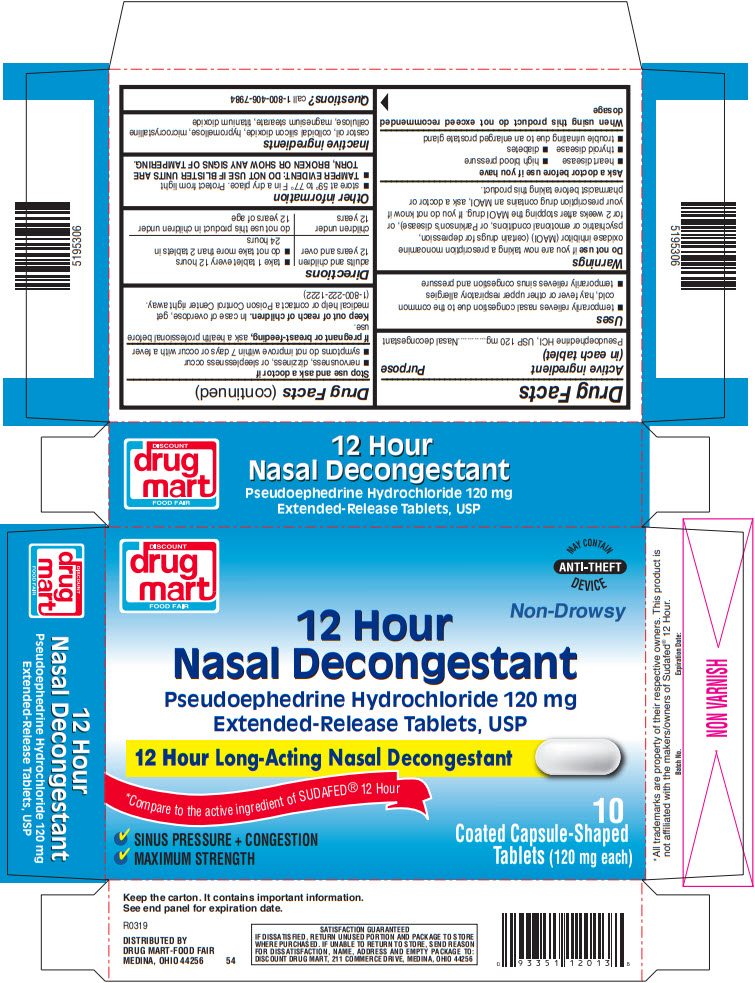Pseudoephedrine Hydrochloride Tablet, Extended Release while Breastfeeding

What is Pseudoephedrine Hydrochloride Tablet, Extended Release used for?
Brief: Nasal decongestant
Is Pseudoephedrine Hydrochloride Tablet, Extended Release safe to use while breastfeeding? Can it interfere with growth and development of my kid?

Pseudoephedrine Hydrochloride Tablet, Extended Release Breastfeeding Analsys
Pseudoephedrine hydrochloride while Breastfeeding
Low RiskCAS Number: 90-82-4
Marketed on multiple compounds as a constituent of antitussives, mucolytics, expectorants and nasal decongestants (Nice 2000).Simple formulations (one active ingredient per drug) are preferable even more while breastfeeding. It is excreted into breast milk in a clinically non-significant amount (Findlay 1984, Kanfer 1993, Nice 2000, Aljazaf 2003) without major problems having been reported in infants whose mothers had received this medication (Ito 1993, Aljazaf 2003, Soasan 2014). Two infants out of ten appeared with mild irritability that did not require medical care (Ito 1993) with only 4 cases related to maternal pseudoephedrine intake having been declared to the French Pharmaceutical Surveillance Database in 26 years (Soasan 2014) . According to one author, it may decrease the milk production, hence a high intake of fluids is recommended to the mother (Nice 2000). Pseudoephedrine produced a variable and non-significant decrease on prolactin levels along with a variable decrease (between 3% and 59%, on average 25%, and a median 15%) on milk production in 8 women whose infants were beyond neonatal period (Aljazaf 2003).Based on the latter single work (Aljazaf 2003), it has been speculated with the use of pseudoephedrine to treat hypergalactia, galactorrhea and to inhibit milk production (Eglash 2014, Trimeloni 2016). Nor-pseudoephedrine was found in the urine of infants whose mothers had consumed a stimulant plant called Catha edulis o cat (Kristiansson 1987). Although not recommended during lactation by some authors (Rubin 1986, Amir 2011), others think it is compatible (Findlay 1984, Ghaeli 1993, Ito 1993, Mitchell 1999, Nice 2000). The American Academy of Pediatrics considers it to be a medication usually compatible with breastfeeding (AAP 2001). It is suggested the use of a lowest effective dose as possible avoiding a long-term use. Monitor milk production, especially if associated with use of Triprolidine (see specific info) during the neonatal period.
Pseudoephedrine Hydrochloride Tablet, Extended Release Breastfeeding Analsys - 2
Pseudoephedrine hydrochloride while Breastfeeding
CAS Number: 90-82-4
Although the small amounts of pseudoephedrine in breastmilk are unlikely to harm the nursing infant, it may cause irritability occasionally. A single dose of pseudoephedrine decreases milk production acutely and repeated use seems to interfere with lactation. Mothers with newborns whose lactation is not yet well established or in mothers who are having difficulties producing sufficient milk should not receive pseudoephedrine. A treatment scheme has been reported for mothers with hypergalactia that uses pseudoephedrine to decrease milk supply.[1]
I already used Pseudoephedrine Hydrochloride Tablet, Extended Release and meanwhile I breastfed my baby should I be concerned?
Pseudoephedrine Hydrochloride Tablet, Extended Release is in the category of low risk, if you have already used it then its not a big deal if health and behavior of baby is good. However your health care provider shall be aware of the fact that you have used Pseudoephedrine Hydrochloride Tablet, Extended Release so you should inform him based on your convenience.
My health care provider has asked me to use Pseudoephedrine Hydrochloride Tablet, Extended Release, what to do?
Though Pseudoephedrine Hydrochloride Tablet, Extended Release dose not comes in category of safe drugs rather it comes in category of low risk but if your doctor is aware that you are breastfeeding your baby and has still recommended it then its advantages must be outweighing the risks.
If I am using Pseudoephedrine Hydrochloride Tablet, Extended Release, will my baby need extra monitoring?
Not much monitoring required while using Pseudoephedrine Hydrochloride Tablet, Extended Release
Who can I talk to if I have questions about usage of Pseudoephedrine Hydrochloride Tablet, Extended Release in breastfeeding?
US
National Womens Health and Breastfeeding Helpline: 800-994-9662 (TDD 888-220-5446) 9 a.m. and 6 p.m. ET, Monday through Friday
UK
National Breastfeeding Helpline: 0300-100-0212 9.30am to 9.30pm, daily
Association of Breastfeeding Mothers: 0300-330-5453
La Leche League: 0345-120-2918
The Breastfeeding Network supporter line in Bengali and Sylheti: 0300-456-2421
National Childbirth Trust (NCT): 0300-330-0700
Australia
National Breastfeeding Helpline: 1800-686-268 24 hours a day, 7 days a week
Canada
Telehealth Ontario for breastfeeding: 1-866-797-0000 24 hours a day, 7 days a week
